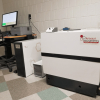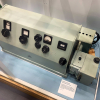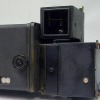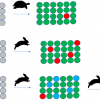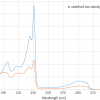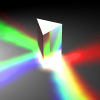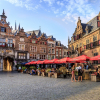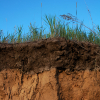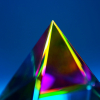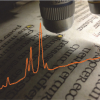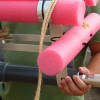Articles
Tony considers the “Life and death of a data set: a forensic investigation”. Over time, spectral data will become increasingly fragmented and lose important supporting information. Computer and software upgrades, and processing in chemometric programs can all cause this. Of course, the answer is to follow FAIR principles and ensure that they are implemented in the analytical laboratory.
Tony and Mohan Cashyap interview John Hollerton, who has just retired after a career of over 40 years at GSK (and its many previous names). John has been responsible for many aspects of analytical chemistry at GSK. As Tony says, he is “an innovative ideas man with some interesting stories”.
John Hammond finishes his magnum opus on “Four Generations of Quality” with a look at what is science fiction and what is science fact. He considers what may turn out to be “fact” in the future for each of the preceding eight articles in the series.
Tony Davies has started a timeline of significant spectroscopic system developments aligned with Queen Elizabeth’s reign as recently celebrated in her Platinum Jubilee. Jumping from Princess Anne the Princess Royal’s birth to Heinrich Kaiser certainly makes for a novel approach! Tony hopes that we can turn this into an online resource with your help.
This article looks at three related spectroscopic techniques/tools in the toolbox, namely, Fluorescence, near infrared (NIR) and Raman; and discuss the “what”, “where” and “how” of these techniques are being used to improve the quality of the measurement processes associated with them.
The latest in this series of “Four Generations of Quality” considers the essential component that controls our modern instrument systems and the associated concept of data integrity that is fundamental to the quality of the data being generated.
Following our articles on the FAIR initiative, we now look at some examples of the FAIRification of data handling, collection and archiving.
The Tony Davies Column offers a challenge to us all with another contribution on FAIR data, which should be Findable, Available, Interoperable and Readable. It is clearly the way we should all be going, everybody from manufacturers and software developers, through researchers to publishers needs to work together.
John Hammond describes the start of a new mini-series of column articles and what you can look forward to in the next few issues.
How did a major trade show organiser cope with the disruption of COVID-19? Susanne Grödl, Exhibition Director of analytica for Messe München, gives her experience.
Peter McIntyre and Tony Davies remember Bill George, a real Welsh character and educator whose style and charisma influenced many to go on and not only stay in science but to rise to leading positions either in industry or academia.
Whilst automation is not a panacea, it can improve the accuracy of manual tasks as well as freeing up our time for more challenging tasks. The authors explore some particular examples they have come across and lessons learned from them.
The UV/Vis+ Photochemistry Database is a collection of photochemical data and information was started in 1999 and is now an online database updated weekly.
With a significant proportion of our regular readership probably under home lock-down, we were wondering if we could help you at this difficult time by pointing out some useful online resources. So, when we finally come out of this pandemic, you could do so better skilled and more up-to-date than when we went in to it.
The latest edition of the European Pharmacopoeia on ultraviolet and visible spectroscopy has become mandatory as of 1 January 2020, so those of you who need to comply with its requirements will find this of particular interest. Nathan and John pick apart the significant changes with a view to their practical application for instrument users. Cells, control of equipment performance, wavelength accuracy, absorbance accuracy, photometric linearity, stray light and resolution, system suitability and reference materials are all covered.
Tony and Lutgarde Buydens give us an update on the planning for the major EuroAnalysis 2021 conference, which is being held in Nijmegen, the Netherlands, at the end of August 2021. At this stage, they are keen to gather suggestions from readers on topics they would like to see covered. Groups are also invited to consider hosting their own event under the EuroAnalysis 2021 banner.
The authors describe work they are doing to develop a green methodology to determine soil organic matter. If the World’s population is to be fed in the future, improvements to agricultural productivity are required and soil fertility will be key to this. Current methodologies are time-consuming and expensive, but visible-near infrared spectroscopy has the potential to replace them.
Some compliance requirements would seem to make impossible demands on the performance specification of “fitness for purpose” for ultraviolet spectrometers; Chris and John unravel what’s going on.
It is not every issue that one of our articles starts with a quotation in medieval English, and it is appropriate as two of our articles cover the use of spectroscopy in cultural heritage. This is yet another field where the rich information provided by spectroscopy, along with its non-destructive nature (for many techniques), portability and ability to generate chemical images make it the answer to many questions. Kate Nicholson, Andrew Beeby and Richard Gameson are responsible for the medieval English at the start of their article “Shedding light on medieval manuscripts”. They describe the general use of Raman spectroscopy for the analysis of historical artefacts, and, in particular, their work on medieval European manuscripts and 18th century watercolour pigments. They stess the importance of checking the actual laser power density to avoid damage to priceless artefacts.
To ensure that the removal and treatment of our sewerage meets increasingly high standards, it is important to be able to monitor the water online both to provide timely information and also to establish changing patterns over days, weeks and seasons. In their article “On-line monitoring for improved wastewater system management: applications of ultraviolet/visible spectroscopy”, Rita Brito, Rita Ribeiro, Tatiana Arriaga, Catarina Leitão, Nìdia Lourenço, Filipa Ferreira and Helena Pinheiro demonstrate the value of on-line UV/vis spectroscopy for wastewater quality monitoring in decentralised wastewater treatment and for spectral on-line monitoring of key quality parameters at the inlet to wastewater treatment plants.


